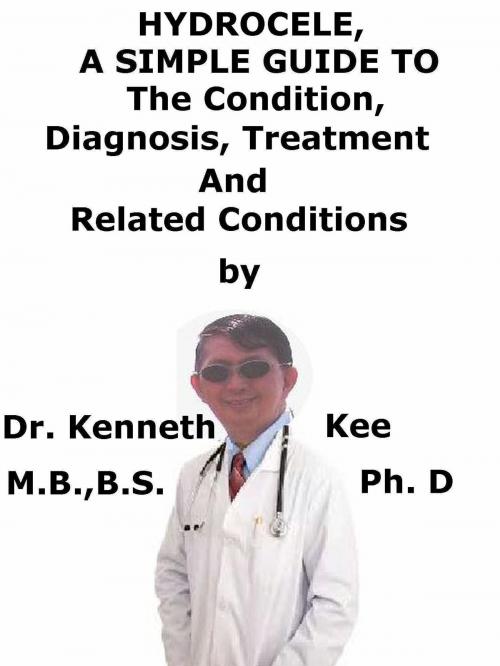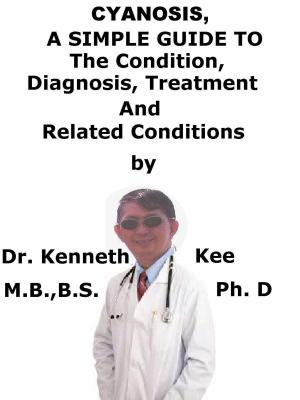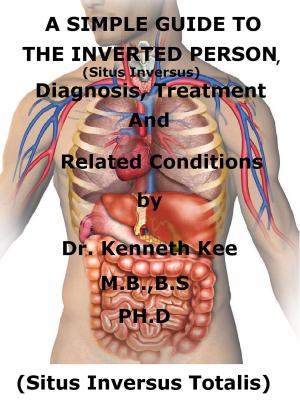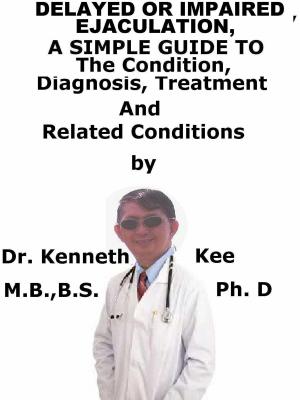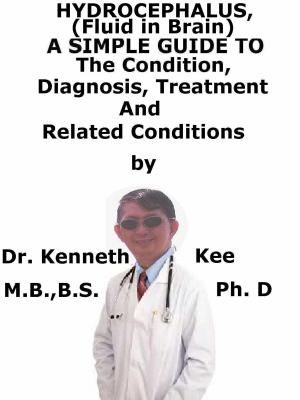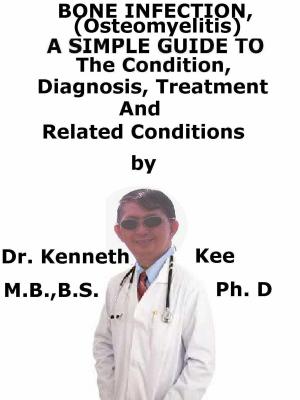Hydrocele, A Simple Guide To The Condition, Diagnosis, Treatment And Related Conditions
Nonfiction, Health & Well Being, Medical, Specialties, Reproductive Medicine| Author: | Kenneth Kee | ISBN: | 9781370841851 |
| Publisher: | Kenneth Kee | Publication: | October 20, 2016 |
| Imprint: | Smashwords Edition | Language: | English |
| Author: | Kenneth Kee |
| ISBN: | 9781370841851 |
| Publisher: | Kenneth Kee |
| Publication: | October 20, 2016 |
| Imprint: | Smashwords Edition |
| Language: | English |
A hydrocele is a medical disorder where there is abnormal collection of fluid within the sac in the scrotum (remnants of the processus vaginalis)
A hydrocele is a fluid-filled swollen sac usually occurring in one scrotum.
A. Simple hydrocele:
a. There is collection of fluid within the tunica vaginalis.
b. It affects 1-2% of male neonates.
c. A congenital, simple hydrocele usually disappears within the first 1-2 years of life.
Causes in older boys and men are:
1. Trauma,
2. Epididymo-orchitis,
3. Testicular torsion,
4. Hernia,
5. Varicocele,
6. Testicular tumor.
Hydroceles in older boys and men may also be due to generalized edema, such as nephrotic syndrome or heart failure.
B. Communicating hydrocele:
Persistence of the processus vaginalis permits peritoneal fluid to communicate easily with the scrotal sac.
C. Hydrocele of the cord:
D. Abdomino-scrotal hydrocele:
Uncommonly a large hydrocele lies across the internal ring, with both inguino-scrotal and intra-abdominal lobes.
Symptoms
1. The main symptom is a painless, swollen testicle, which feels like a water balloon.
2. A hydrocele may occur on one or both sides.
3. Scrotal enlargement with a non-tender, cystic swelling.
4. Pain is not a feature unless there is infection in the hydrocele or if there is pain caused by the underlying disease.
5. The testis is normally palpable but may be difficult to palpate if the hydrocele is large.
6. A hydrocele lies anterior to and below the testis and will transilluminate.
Transillumination is not diagnostic.
Indications for further investigation are:
1. Failure to clearly delineate the testis,
2. Tenderness on palpation
3. Internal shadows on transillumination
Ultrasound can help to detect if any underlying pathology is present.
Hydroceles are not harmful most of the time.
They are given treatment only when they produce infection or discomfort.
Many hydroceles in infancy resolve before the age of 2 years.
Early surgery in this age group is necessary if there is indication of a linked inguinal hernia or underlying testicular pathology
Once underlying pathology has been excluded, adults with non-communicating hydroceles can be treated medically, with support for the scrotum and reassurance.
Aspiration treatment may be needed for bigger hydroceles.
Aspiration treatment is otherwise not recommended unless for symptomatic treatment in an elderly man who is not fit for surgery
An exploratory operation is needed if the diagnosis is not certain or underlying disease cannot be found.
Other indications for operation are:
1. If the large hydrocele is causing discomfort,
2. If there is infection
3. If it repeatedly re-accumulates after aspiration
Hydroceles from an inguinal hernia should be treated with surgery as soon as possible.
Hydroceles that do not go away on their own after several months may require surgery.
A hydrocelectomy (removal of sac lining) is frequently done to correct the problem.
Surgical removal of a hydrocele can be done
TABLE OF CONTENT
Introduction
Chapter 1 Hydrocele
Chapter 2 Causes
Chapter 3 Symptoms
Chapter 4 Diagnosis
Chapter 5 Treatment
Chapter 6 Prognosis
Chapter 7 Epididymitis
Chapter 8 Testicle Torsion
Epilogue
A hydrocele is a medical disorder where there is abnormal collection of fluid within the sac in the scrotum (remnants of the processus vaginalis)
A hydrocele is a fluid-filled swollen sac usually occurring in one scrotum.
A. Simple hydrocele:
a. There is collection of fluid within the tunica vaginalis.
b. It affects 1-2% of male neonates.
c. A congenital, simple hydrocele usually disappears within the first 1-2 years of life.
Causes in older boys and men are:
1. Trauma,
2. Epididymo-orchitis,
3. Testicular torsion,
4. Hernia,
5. Varicocele,
6. Testicular tumor.
Hydroceles in older boys and men may also be due to generalized edema, such as nephrotic syndrome or heart failure.
B. Communicating hydrocele:
Persistence of the processus vaginalis permits peritoneal fluid to communicate easily with the scrotal sac.
C. Hydrocele of the cord:
D. Abdomino-scrotal hydrocele:
Uncommonly a large hydrocele lies across the internal ring, with both inguino-scrotal and intra-abdominal lobes.
Symptoms
1. The main symptom is a painless, swollen testicle, which feels like a water balloon.
2. A hydrocele may occur on one or both sides.
3. Scrotal enlargement with a non-tender, cystic swelling.
4. Pain is not a feature unless there is infection in the hydrocele or if there is pain caused by the underlying disease.
5. The testis is normally palpable but may be difficult to palpate if the hydrocele is large.
6. A hydrocele lies anterior to and below the testis and will transilluminate.
Transillumination is not diagnostic.
Indications for further investigation are:
1. Failure to clearly delineate the testis,
2. Tenderness on palpation
3. Internal shadows on transillumination
Ultrasound can help to detect if any underlying pathology is present.
Hydroceles are not harmful most of the time.
They are given treatment only when they produce infection or discomfort.
Many hydroceles in infancy resolve before the age of 2 years.
Early surgery in this age group is necessary if there is indication of a linked inguinal hernia or underlying testicular pathology
Once underlying pathology has been excluded, adults with non-communicating hydroceles can be treated medically, with support for the scrotum and reassurance.
Aspiration treatment may be needed for bigger hydroceles.
Aspiration treatment is otherwise not recommended unless for symptomatic treatment in an elderly man who is not fit for surgery
An exploratory operation is needed if the diagnosis is not certain or underlying disease cannot be found.
Other indications for operation are:
1. If the large hydrocele is causing discomfort,
2. If there is infection
3. If it repeatedly re-accumulates after aspiration
Hydroceles from an inguinal hernia should be treated with surgery as soon as possible.
Hydroceles that do not go away on their own after several months may require surgery.
A hydrocelectomy (removal of sac lining) is frequently done to correct the problem.
Surgical removal of a hydrocele can be done
TABLE OF CONTENT
Introduction
Chapter 1 Hydrocele
Chapter 2 Causes
Chapter 3 Symptoms
Chapter 4 Diagnosis
Chapter 5 Treatment
Chapter 6 Prognosis
Chapter 7 Epididymitis
Chapter 8 Testicle Torsion
Epilogue
